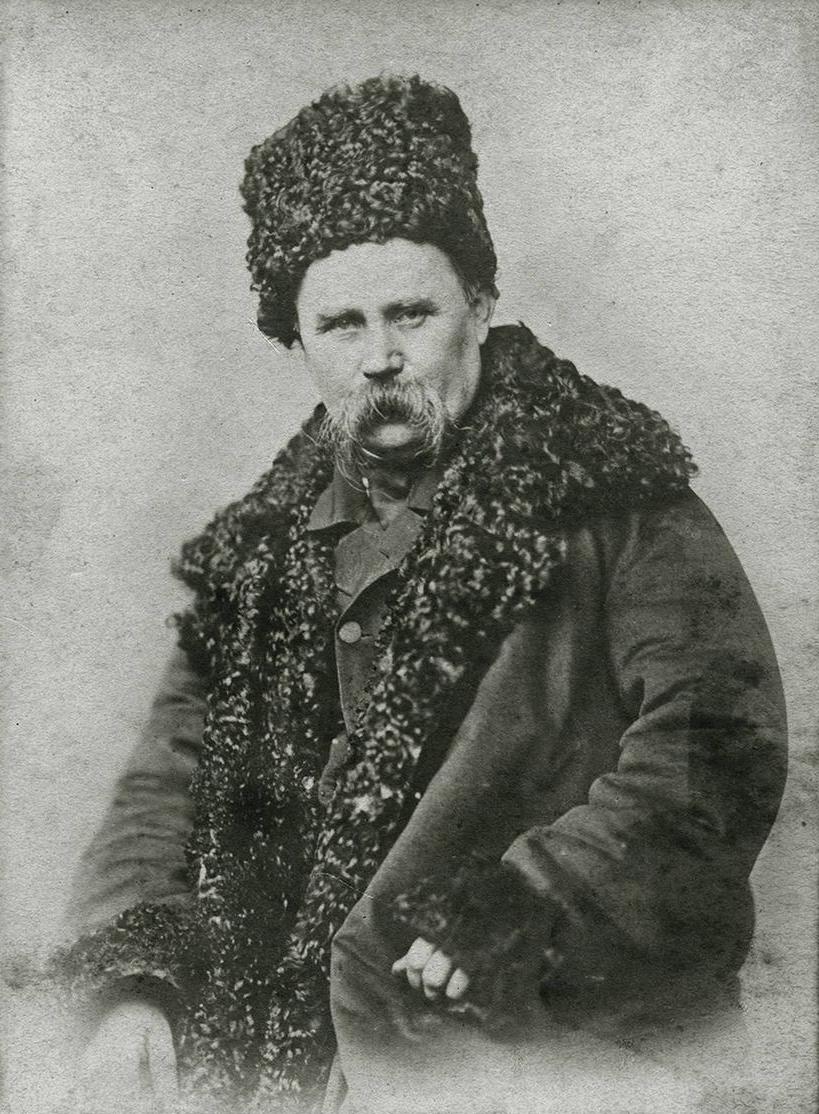MARCH 23, 2025 – This morning after breakfast (over which I continued ploughing through Howard Zinn’s flawed[1] but compelling A People’s History of the United States, I poured myself a small cup of coffee and repaired to another reading spot to explore Anna Reid’s Borderland, fine work on the history of Ukraine, which, in turn, is the Ukrainian word for . . . “borderland.” While whistling merrily—well, given the violent history of the territory, not exactly “merrily”—along a deeply rutted road across the blood-soaked terrain of lands that at one time or another, in part or in whole, were called or ruled by . . . Kievan Rus, “Little Russia,” Imperial Russia, the Crimean Khanate, Galicia, the Austro-Hungarian Empire, Ruthenia, Poland, Belarus, the Soviet Union (or more specifically, the Soviet Socialist Republic of Ukraine), and, of course, “Ukraine” . . . I stumbled into the legacy of the national cultural hero of that land from the Ukrainian point of persuasion. The man: Taras Shevchenko.
Ever hear of him? Neither had I—until very recently. But now, having read a smidgeon of his lyrical poetry, glanced at a sampling of his exquisite paintings, and having learned a few highlights of his extraordinary life, I can never forget him. And it occurs to me, how could an outsider understand the current conflict in that devastated land without knowing something about the life and times of this larger than life figure? As is always the case with every variation of that rhetorical question, how in the world does one educate oneself adequately about any big-picture issue that forces itself on the world? (For some reason (perhaps traceable to “American pragmatism and impatience”), the latter question reminds me of Alexander the Great’s “solution” to the Gordian Knot.)
But I digress. Back to this man Shevchenko. I made my initial acquaintance with him via an executive summary of the comparatively late rise of literary Czech, Russian, Ukrainian, Bulgarian, Romanian, and Hungarian languages. The first Russian dictionary, for example, wasn’t published until the 1790s; the first grammar, in 1802. The first Hungarian grammar appeared the following year. Before the bust-up of the Austro-Hungarian Empire in the wake of World War I, Hungarian aristocrats stuck mostly to French, German and a debased form of Latin. The first Czech dictionary wasn’t available until 1835—prior to that time German was the dominant language in Czech cities.
French was the language of choice among the Russia nobility. The work of Pushkin, the first great Russian playwright/poet/novelist to use the vernacular, didn’t appear in public until 1823, and even as late as the 1870s—the setting for Anna Karenina—Tolstoy had his character in the title role still speaking French.
Ukraine—which for centuries was whip-sawed between the Polish Kingdom and the Russian Empire (with incursions by the Swedes and various factions of Cossacks galloping back and forth, sometimes in league with the Turks, sometimes opposing)—didn’t achieve sovereignty until I was well out of law school and long chained to a desk inside a tall office building.
The existence of “literary Ukrainian” was not to be until . . . the appearance of our hero, Taras Shevchenko, rather late to the historical party. He was born a serf in 1814 and died a freed serf in 1861 (seven days before the general emancipation of serfs was officially proclaimed by Tsar Alexander II).
Shevchenko’s bad breaks—including seven years of brutal exile—along with his many lucky ones are the stuff of a great novel or film. In fact . . . the internet being “a beautiful thing,” with nominal effort motivated by curiosity, I learned that a purportedly superb novel capturing the details of Shevchenko’s life has been written—The Exile—by another Ukrainian who was herself, a personality deserving of our acquaintance and admiration: lawyer, writer, Zanaida Tulub (b. 1890 in Kyiv; d. 1964 in Irpin).
From all of this I conclude that try as I might to define “Ukrainian,” I’ve been led deep into the jungle of language, literature, religion, politics, ethnicity, culture, and geography at the crossroads of history. Knowing something about the life and works of Shevchenko serve well the Sisyphean effort to achieve a fuller understanding of . . . the borderland.
Subscribe to this blog and receive notifications of new posts by email.
© 2025 by Eric Nilsson
[1] As I wrote in my post of 2/9/25, Zinn’s magnum opus is seriously lacking source citations.
